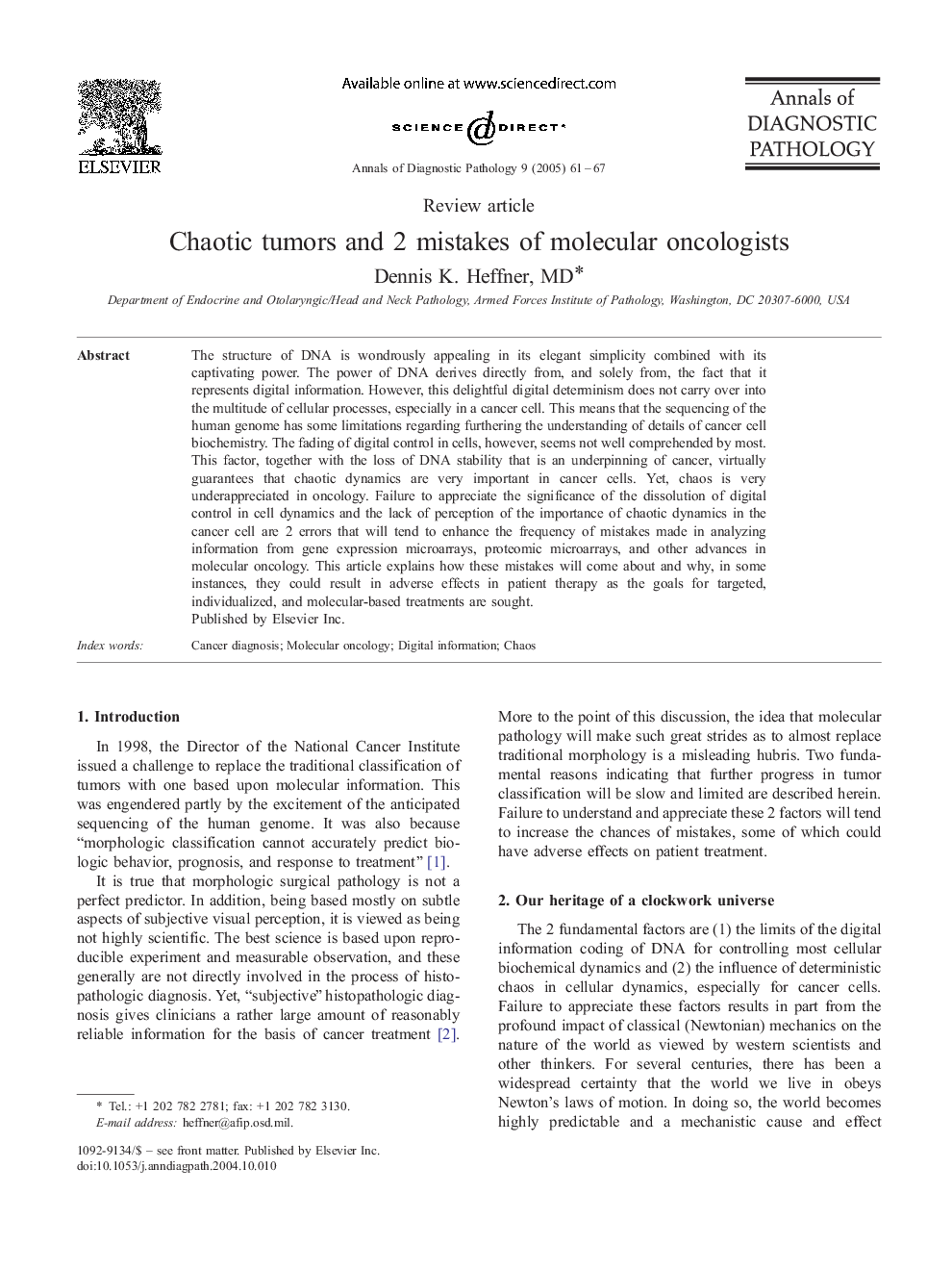| کد مقاله | کد نشریه | سال انتشار | مقاله انگلیسی | نسخه تمام متن |
|---|---|---|---|---|
| 10090624 | 1606541 | 2005 | 7 صفحه PDF | دانلود رایگان |
عنوان انگلیسی مقاله ISI
Chaotic tumors and 2 mistakes of molecular oncologists
دانلود مقاله + سفارش ترجمه
دانلود مقاله ISI انگلیسی
رایگان برای ایرانیان
کلمات کلیدی
موضوعات مرتبط
علوم پزشکی و سلامت
پزشکی و دندانپزشکی
آسیبشناسی و فناوری پزشکی
پیش نمایش صفحه اول مقاله

چکیده انگلیسی
The structure of DNA is wondrously appealing in its elegant simplicity combined with its captivating power. The power of DNA derives directly from, and solely from, the fact that it represents digital information. However, this delightful digital determinism does not carry over into the multitude of cellular processes, especially in a cancer cell. This means that the sequencing of the human genome has some limitations regarding furthering the understanding of details of cancer cell biochemistry. The fading of digital control in cells, however, seems not well comprehended by most. This factor, together with the loss of DNA stability that is an underpinning of cancer, virtually guarantees that chaotic dynamics are very important in cancer cells. Yet, chaos is very underappreciated in oncology. Failure to appreciate the significance of the dissolution of digital control in cell dynamics and the lack of perception of the importance of chaotic dynamics in the cancer cell are 2 errors that will tend to enhance the frequency of mistakes made in analyzing information from gene expression microarrays, proteomic microarrays, and other advances in molecular oncology. This article explains how these mistakes will come about and why, in some instances, they could result in adverse effects in patient therapy as the goals for targeted, individualized, and molecular-based treatments are sought.
ناشر
Database: Elsevier - ScienceDirect (ساینس دایرکت)
Journal: Annals of Diagnostic Pathology - Volume 9, Issue 1, February 2005, Pages 61-67
Journal: Annals of Diagnostic Pathology - Volume 9, Issue 1, February 2005, Pages 61-67
نویسندگان
Dennis K. MD,